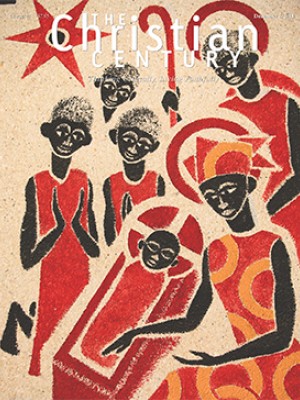How The Hate U Give accomplishes what The Oath doesn’t
To bridge our country’s divides, we need deep emotion rooted in moral complexity—not jokey white-bro solidarity.

With the country divided into two sides that barely understand each other, two recent films take a crack at bridging the divide—one by means of satire, the other by emotional earnestness.
The satirical approach is taken by The Oath, in which director Ike Barinholtz imagines a parallel present in which the norms of civility have broken down to the point of violence. At a stop sign, the main character Chris (played by Barinholtz) witnesses an angry white man get out of his truck, confront the woman in the car in front of him, and then slash her tires.
Chris is shaken, but not surprised. Everyone lives in a state of dread, and paranoia is amplified when all citizens are encouraged to sign a Patriot’s Oath that conflates unwavering devotion to the nation with unwavering devotion to the president. Legends circulate online about people being disappeared by the Citizen Protection Unit for refusing to sign the oath, corporations threaten to fire employees who don’t sign, and parents express dread about protecting their children. Most of the characters just try to keep their heads down and keep going.
Read our latest issue or browse back issues.
Not Chris. He obsessively consumes leftist media to confirm his sense of reality and proudly refuses to sign the oath. When Chris’s more conservative family shows up for Thanksgiving, the violence of the streets seeps onto the dinner table and long-standing family dramas merge with political traumas. By Thanksgiving dinner, they are screaming insults over the turkey. Things take a further turn for the worse when two CPU agents show up at the house to question Chris.
But from there the film—which to that point is a somewhat compelling commentary on our political moment—devolves into a pissing contest between the self-righteous Chris and his equally insufferable foil, a macho CPU agent who seems to embody all of Chris’s fascist fears, making dark jokes about purging the country of liberal sissies. Their conflict is then resolved when they realize they have more in common with each other than they could at first admit.
Jokey white bro solidarity doesn’t seem like the kind of understanding across difference that we need now. And the jokey white satirical tone of the whole movie assumes that those laughing along constitute the superior side. So much for bridging differences.
The Hate U Give takes a very different approach. According to Amandla Stenberg, who plays the role of the hero, Starr, the film wants to break down defenses and make people, especially white people, cry.
Like The Oath, this movie starts with violence at a traffic stop. In this case, a white police officer shoots and kills Khalil, an unarmed black teenager, with Starr as the only witness. Khalil’s death sparks national outrage, and Starr must decide if and how to speak out for her childhood friend.
The movie is adapted from the young adult novel by Angie Thomas, and the tropes of that genre—a first-person narrative about finding oneself on the way to adulthood—allow it to strike boldly at the emotions that more detached grown-up dramas might avoid. Starr is our guide between the white and black worlds she navigates every day. She lives in a predominantly black, poor neighborhood and attends a primarily white, affluent private high school. Switching between the codes of behavior each of these worlds requires is a matter of emotional survival for Starr, and learning to integrate them more fully is her quest.
Whereas The Oath simplifies our deep divisions by treating them as a misunderstanding between two white men, The Hate U Give complicates things at every turn. Khalil is running drugs for the local gang, which allows national media, law enforcement, and some of Starr’s white friends to question his innocence. Starr’s maternal uncle is a police officer who tries to explain what cops feel on the street and why even he, as a black cop, acts from racial bias. Starr has a white boyfriend who thinks he is beyond seeing race. “If you don’t see my blackness, you don’t see me,” Starr tells him. Their young love is a vehicle for his awakening to the realities of race and his refusal to stop hiding from them.
The Oath tries to help us through the impasse with strained laughter. The makers of The Hate U Give suggest the way through is tears. Tears in a movie theater can’t heal the wounds of 400 years of racial injustice. But the movie wagers that we can’t take any steps toward justice until all of us can cry for black lives.
A version of this article appears in the print edition under the title “Should we laugh? Should we cry?”






